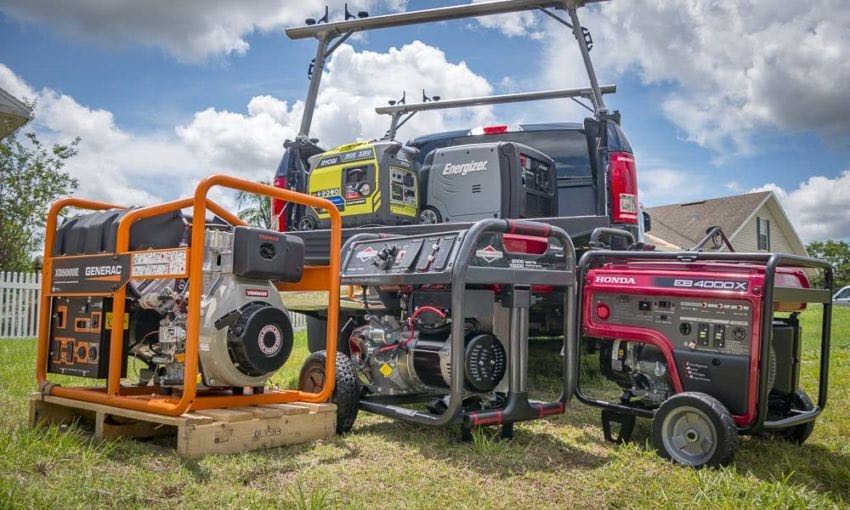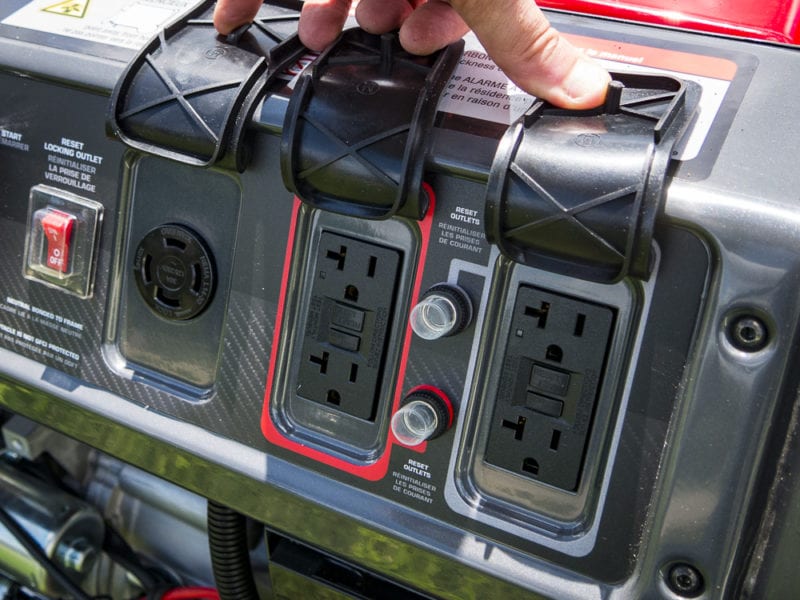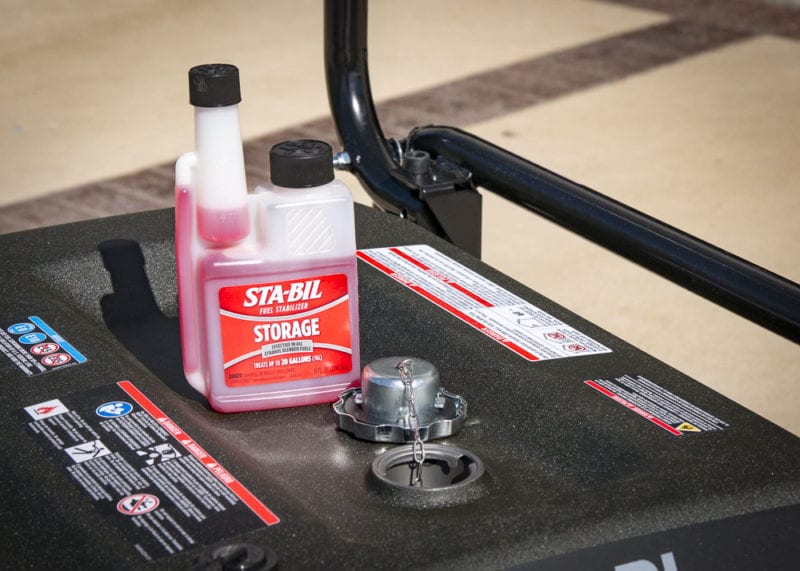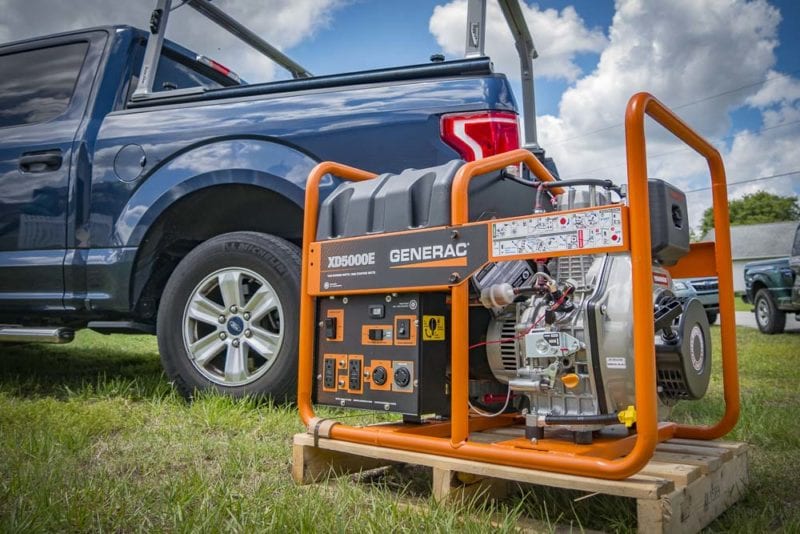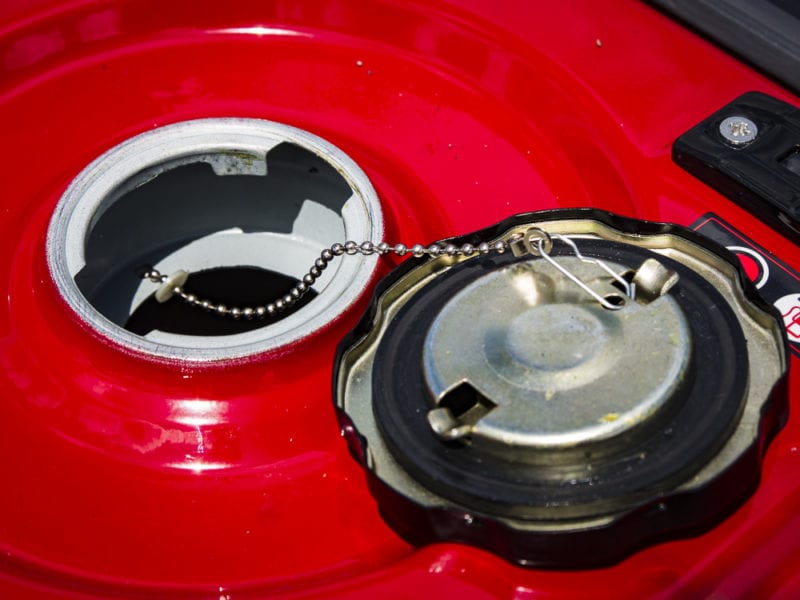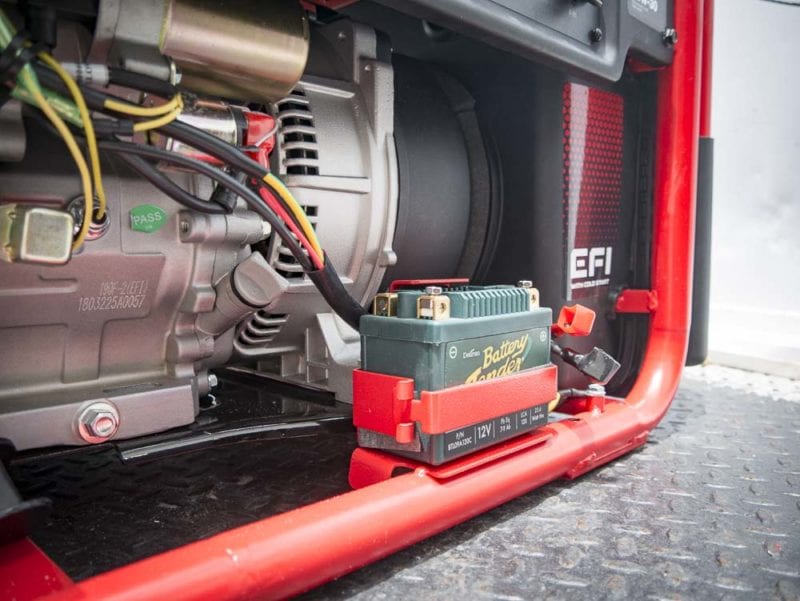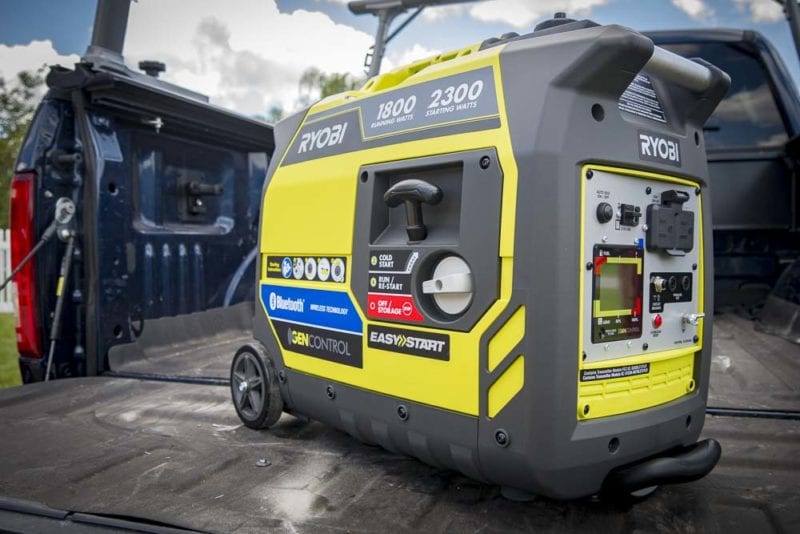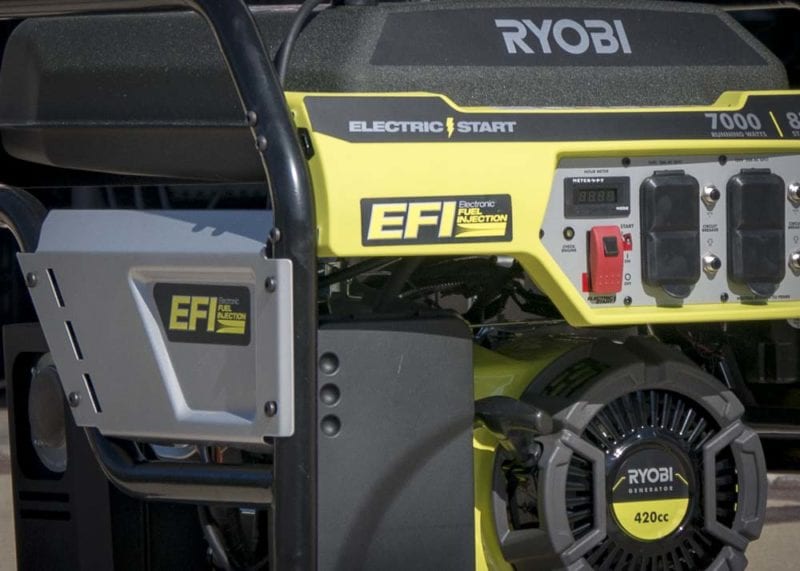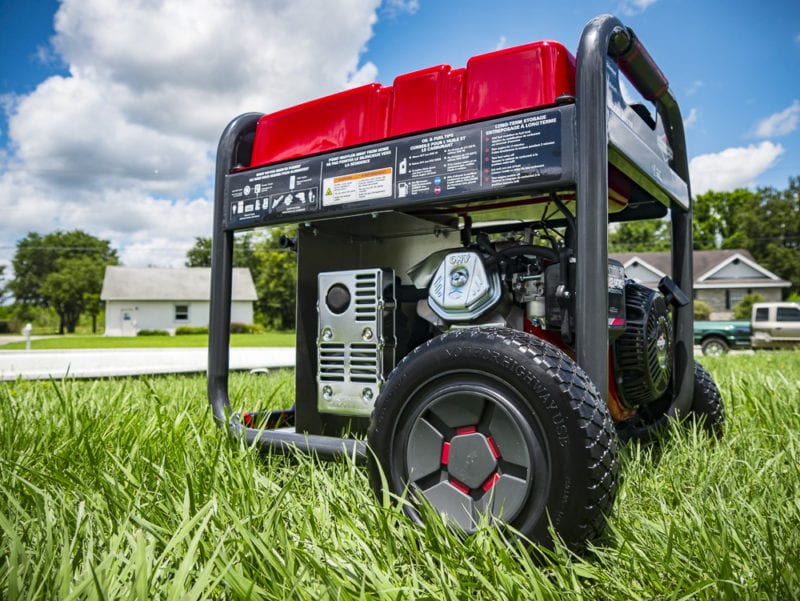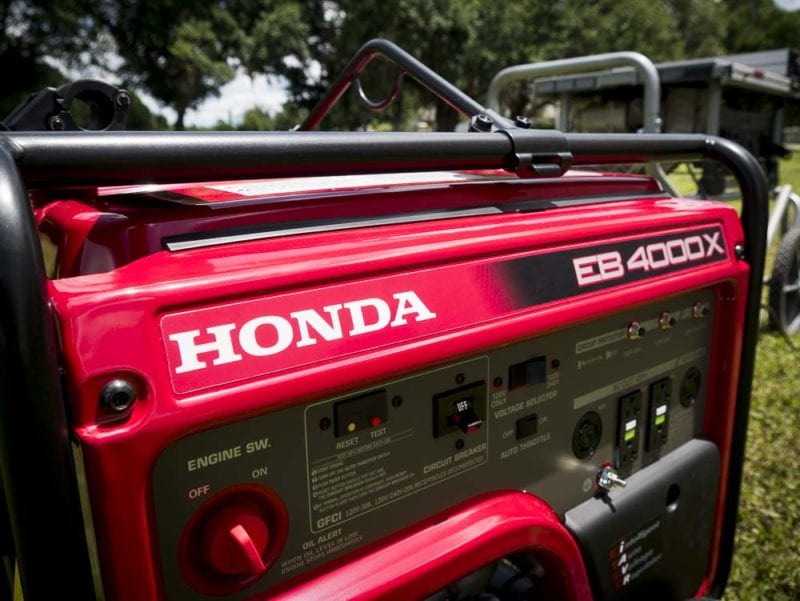Whether you’re preparing for emergency power, looking to run a job site, or have recreational use in mind, there’s a lot to consider when buying a portable generator. To help you sort it out among the plethora of options out there, we’ve put together a list of things our Pro team looks for when they’re in the market for a new one.
Buying a Portable Generator? Here’s What to Look For!
Power and Outlets
When choosing the best generator for your needs, the first thing you need to know is what size generator you want to buy. That means you need to understand how much power you need. Your refrigerator may only need 700 watts to run, but what happens when it needs 2100 watts of startup power? Pay attention to the startup watts required to run the equipment you intend to connect to the generator as well as the “running watts” you require once everything is going.
The other side of the conversation is what type of outlets you need. Smaller inverter generators will usually have a couple of 120V AC outlets and maybe a couple of USB ports. Once you get up to 4000 watts, you’ll start seeing 240V plugs show up along with more 120V outlets. If you’re thinking about having an electrician wire your generator directly into your panel, you’ll need a 240V plug. Since you’re using your generator outside, look for one that has GFCI protected outlets.
Total Harmonic Distortion (THD and Clean Power)
If you expect to run electronic equipment such as laptops or lab equipment, the waveform is significant. In general, you need a total harmonic distortion of less than 6% to avoid damaging electrical circuits. Often referred to as “clean power” or “pure sine wave”, it’s a more stable and predictable level of voltage. Pure sine wave generators tend to be more expensive and are found on lower-watt units.
By the way, battery inverters are not all low THD models. Some put out square waves. Check the specs if you know you need clean power.
Occasional or Consistent Use?
Most generators include a consumer warranty covering you for several years. For emergency power or recreational use, any reputable brand is going to work. However, if you’re running a crew that needs a generator just about every day, you’re going to be better off looking for a model with a legitimate commercial engine. Not only will it be a better fit, but you’ll also likely get a warranty that lasts for more than a year instead of just 90 days or 6 months. The obvious downside is that these are typically more expensive.
Fuel Type
Gas generators are by far the most common. Fuel is easy to come by except during the panic leading up to and the days following major hurricane preparation .
Pro Tip: Whether you’re storing fuel in the tank or fuel containers, be sure to use fuel stabilizer to negate the effects of ethanol.
Diesel generators give you better fuel efficiency if you’re willing to pay for the upgrade. You also get to lose the carburetor that always seems to be clogged at the least convenient time. If you’re thinking about a whole-house generator, you’ll be looking at diesel. Just keep in mind that diesel may not be as easy to find as gasoline.
Another option is to look for a propane generator or a gas generator that can be converted to propane use. If you want to go for a more environmentally-friendly fuel source and don’t mind that it’s a bit more complex, it’s another way to go.
Battery-powered inverters like the EGO Nexus Power Station and the Ryobi Power Station have the advantage of being able to recharge via solar panels, run silently, and have no emissions. The downside is that they’re expensive, recharge very slowly, and typically won’t give you more than 2000 watts or so. Outside of camping and tailgating, they’re not a very practical option currently.
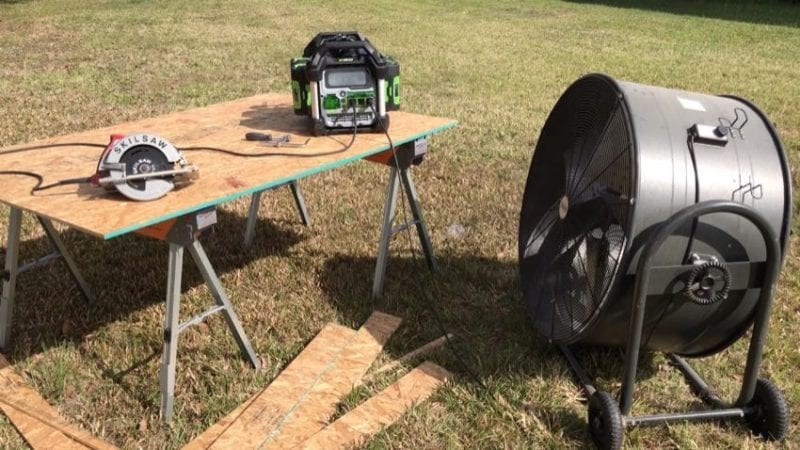
Fuel Tank
The bigger the fuel tank, the longer you can go between refueling. That’s a given. Most generators have a fuel tank that will give you 7 – 9 hours of runtime at a 50% load. You’ll run longer if you use a lower percentage of the available power and shorter if you use more. Given the choice between a smaller and larger tank, I’ll go larger. Just keep in mind it will be heavier with a full tank of fuel.
There are also plastic and gas fuel tanks. There are pros and cons of both and we have both types. Generally, I like plastic since there aren’t corrosion issues with it (thanks again, ethanol). However, it’s not a make-or-break feature for me.
Starting
If you really like pulling a recoil cord on an engine, by all means, skip the electric start. Seriously, though, electric start engines are fantastic if you can swing the extra cost. When you’re buying a portable generator, you’ll find most still use lead-acid batteries like a car. There are some lithium-ion ones running around, though.
Be sure to charge your battery up before use. Most generators will be fine leaving the charger plugged in to maintain the charge between uses.
Noise Level
Smaller generators have the option of a quiet design. Some are quieter than normal conversation levels. If you’re tailgating or camping in an area that allows generators, your neighbors will appreciate the consideration.
By the time you move into the 4000-watt class and higher, there isn’t much available in the “quiet” class. One consideration boils down to fuel source. Diesel typically makes more noise than a comparable gas model.
EFI
Electronic Fuel Injection (EFI) is a great feature to have. It eliminates the need for a carburetor. Clogged carburetors are one of the biggest headaches for those who stay up on maintenance as well as they should. There are still plenty of things that can go wrong without maintenance, of course, but a clogged carburetor isn’t one of them. Additionally, your generator will be easier to start up in cold weather.
Carbon Monoxide Detection
Several manufacturers include carbon monoxide (CO) detectors in their generators. Honda announced an initiative to bring it to their entire lineup. These simply measure the level of carbon monoxide near the engine and shut it down if levels get too high. They typically work faster than the ones you can install in your home and do a better job of preventing illness or death due to CO. Some consider these “nuisance” components, however, the industry seems to have indicated a shift towards including this with most newer models.
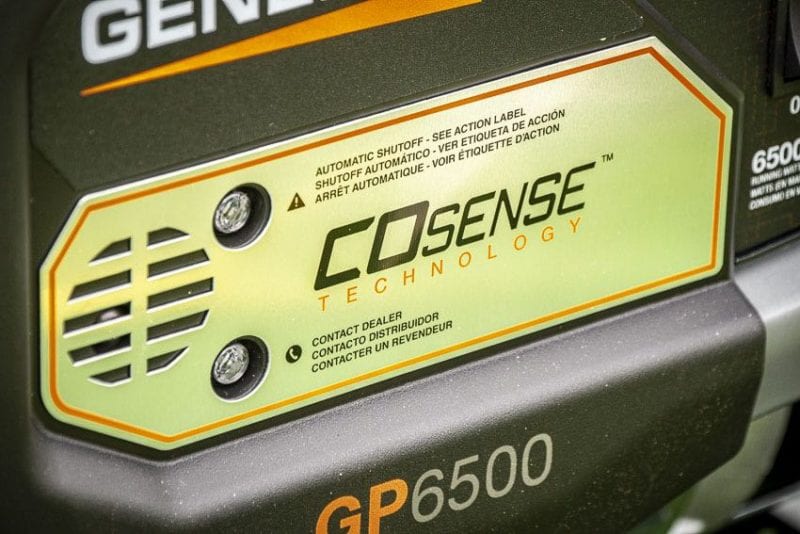
Realize that CO detectors can be tricked. Make sure you point the generator exhaust downwind from the sensor and don’t place it in a corner to avoid false readings.
Wheel Kit
Generators are heavy, but not all come with a wheel kit. Some require you to purchase it separately, so make sure you know before swiping your credit card at the register! You can find generators with dual wheels or even four. You can also purchase aftermarket generator dolly kits to add wheels to a model that doesn’t have them.
We found it fairly simple to install wheel kits with basic tools. You can put a set of wheels on a generator in just a few minutes. You may want a friend to help you out or you can set the generator on the edge of your truck’s tailgate to give you access to the installation area.
Lift Hook Bar
If you’re buying a portable generator for commercial or industrial work, there’s a good chance you’ll need to lift it to a higher floor at some point. A generator that includes a lift hook bar gives you a big advantage that can save you time and trouble.
Connecting a Generator to Your Home
Having a direct connection from your generator to your home is a very convenient way to have emergency power. The best way to go is with a whole-house standby generator specifically designed for that purpose. These whole-home generators kick on or off automatically with the power. They’re more expensive than portable generators, of course, but they’ve become more affordable recently.
You can also connect many portable generators to your home. However, neither they nor whole-house generators are a DIY job. You’ll need to install a transfer switch and have the work done by a qualified electrician.
There are other considerations as well. Number one is making sure the generator you choose has enough power. If you don’t have enough power to run the entire house plus startup surge, you may need to flip some breakers to prioritize. If you’re going with a portable generator, you need to make sure you know where it’s going to sit while it’s running and that you have a long enough cable to reach your transfer switch.
Need more specific suggestions on buying a portable generator? Check out some of our favorite generators !
Now that buying a portable generator can be checked off your list, be sure you also know how to maintain your generator so it’s ready to work when you need it!

